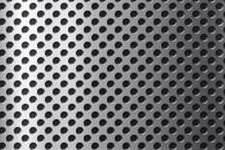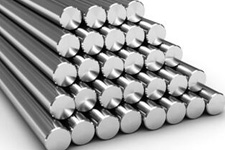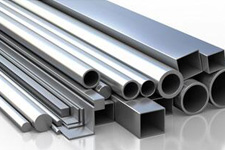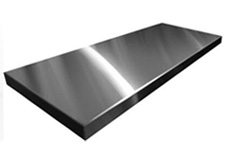What is nickel and nickel alloys?
A heavy non-ferrous metal material consisting of nickel based addition of other alloying elements. In order to further improve the physical and chemical properties of nickel and meet the requirements of scientific, technological and industrial development, appropriate amount of alloy elements should be added to nickel.
Nickel alloys of heavy non-ferrous materials mainly include nickel alloys for electric vacuum, nickel alloys for thermocouple, Monel alloys, nickel beryllium alloys and nickel base catalyst alloys for synthetic diamond.
Nickel alloy ingots or castings are mainly produced by vacuum casting. The ingot is first rolled or stretched after hot rolling, extrusion or forging, intermediate heat treatment, and finally processed into the desired finished product. Some nickel-based superalloys are made directly from castings or parts required by powder metallurgy. Nickel alloys are mainly used in electronics, chemical, mechanical, medical, energy development and navigation, aviation and aerospace sectors.
Nickel is slowly oxidized by air at room temperature and is considered corrosion-resistant. It has been used for plating iron and brass, coating chemistry equipment, and manufacturing certain alloys that retain a high silvery polish. About 9% of world nickel production is still used for corrosion-resistant nickel plating.
Nickel is one of four elements (the others are iron, cobalt, and gadolinium)[7] that are ferromagnetic at approximately room temperature. Alnico permanent magnets based partly on nickel are of intermediate strength between iron-based permanent magnets and rare-earth magnets. The metal is valuable in modern times chiefly in alloys; about 68% of world production is used in stainless steel. A further 10% is used for nickel-based and copper-based alloys, 7% for alloy steels, 3% in foundries, 9% in plating and 4% in other applications, including the fast-growing battery sector,[8] including those in electric vehicles (EVs). As a compound, nickel has a number of niche chemical manufacturing uses, such as a catalyst for hydrogenation, cathodes for batteries, pigments and metal surface treatments. Nickel is an essential nutrient for some microorganisms and plants that have enzymes with nickel as an active site.
Chemical Requirements
| ASTM B161 |
| ASTM B165 |
| Element | Composition.% |
| Element | Composition.% |
| UNS N02200 | UNS N02201 |
| UNS N04400 |
| Ni | 99 min | 99 min |
| Ni | 63.0 min |
| Cu | 0.25 max | 0.25 max |
| Cu | 28.0 - 34.0 |
| Fe | 0.4 max | 0.4 max |
| Fe | 2.5 max |
| Mn | 0.35 max | 0.35 max |
| Mn | 2.0 max |
| C | 0.15 max | 0.02 max |
| C | 0.3 max |
| Si. | 0.35 max | 0.35 max |
| Si | 0.5 max |
| S | 0.01 max | 0.01 max |
| S | 0.024 max |
| ASTM B167 |
| Composition Limits, % |
| Element | Alloy | Alloy | Alloy | Alloy | Alloy | Alloy | Alloy |
| N06025 | N06045 | N06600 | N06601 | N06603 | N06617 | N06674 |
| Nickel | remainder | 45.0 min | 72.0 min | 58.0-63.0 | remainder | 44.5 min | remainder |
| Chromium | 24.0-26.0 | 26.0-29.0 | 14.0-17.0 | 21.0-25.0 | 24.0-26.0 | 20.0-24.0 | 21.5-24.5 |
| Iron | 8.0-11.0 | 21.0-25.0 | 6.0-10.0 | remainder" | 8.0-11.0 | 3.0 max | 20.0-27.0 |
| Manganese | 0.15 max | 1.0 max | 1.0 max | 1.5 max | 0.15 max | 1.0 max | 1.50 max |
| Molybdenum | -- | -- | -- | -- | -- | 8.0-10.0 | -- |
| Cobalt | -- | -- | -- | -- | -- | 10.0-15.0 | -- |
| Aluminum | 1.8-2.4 | -- | -- | 1.0-1.7 | 2.4-3.0 | 0.8-1.5 | -- |
| Carbon | 0.15-0.25 | 0.05-0.12 | 0.15 max | 0.10 max | 0.20-0.40 | 0.05-0.15 | 0.10 max |
| Copper | 0.1 max | 0.3 max | 0.5 max | 1.0 max | 0.50 max | 0.5 max | -- |
| Boron | -- | -- | -- | -- | -- | 0.006 max | 0.0005-0.006 |
| Silicon | 0.5 max | 2.5-3.0 | 0.5 max | 0.5 max | 0.50 max | 1.0 max | 1.0 max |
| Sulfur | 0.010 max | 0.010 max | 0.015 max | 0.015 max | 0.010 max | 0.015 max | 0.015 max |
| Titanium | 0.1-0.2 | -- | -- | -- | 0.1-0.25 | 0.6 max | 0.05-0.20 |
| Niobium | -- | -- | -- | -- | -- | -- | 0.10-0.35 |
| Phosphorous | 0.020 max | 0.020 max | -- | -- | 0.020 max | -- | 0.030 max |
| Zirconium | 0.01-0.10 | -- | -- | -- | 0.01-0.10 | -- | -- |
| Yttrium | 0.05-0.12 | -- | -- | -- | 0.01-0.15 | -- | -- |
| Cerium | -- | 0.03-0.09 | -- | -- | -- | -- | -- |
| Nitrogen | -- | -- | -- | -- | -- | -- | 0.02 max |
| Tungsten | -- | -- | -- | -- | -- | -- | 6. G-8.0 |
| ASTM B407 |
| Composition Limits, % |
| Element | UNS N08120 | UNS N08800 | UNS N08810 | UNS N08811 | UNS N08801 | UNS N08890 | UNS N06811 |
| Nickel | 35.0 - 39.0 | 30.0 - 35.0 | 30.0 - 35.0 | 30.0 - 35.0 | 30.0 - 34.0 | 40.0 - 45.0 | 38.0 - 46.0 |
| Chromium | 23.0 - 27.0 | 19.0 - 23.0 | 19.0 - 23.0 | 19.0 - 23.0 | 19.0 - 23.0 | 23.5 - 28.5 | 27.0 - 31.0 |
| Iron | remainder | 39.5 minA | 39.5 minA | 39.5 minA | 39.5 min | remainder | remainder |
| Manganese | 1.5 max | 1.5 max | 1.5 max | 1.5 max | 1.5 max | 1.5 max | 2.0 max |
| Carbon | 0.02 - 0.10 | 0.10 max | 0.05 - 0.10 | 0.06 - 0.10 | 0.10 max | 0.06 - 0.14 | 0.03 max |
| Copper | 0.5 max | 0.75 max | 0.75 max | 0.75 max | 0.5 max | 0.75 max | -- |
| Silicon | 1.0 max | 1.0 max | 1.0 max | 1.0 max | 1.0 max | 1.0 - 2.0 | 0.60 max |
| Sulfur | 0.03 max | 0.015 max | 0.015 max | 0.015 max | 0.015 max | 0.015 max | 0.010 max |
| Aluminum | 0.40 max | 0.15 - 0.60 | 0.15 - 0.60 | 0.85≤Al+Ti
≤1.20 | -- | 0.05 - 0.60 | -- |
| Titanium | 0.20 max | 0.15 - 0.60 | 0.15 - 0.60 | 0.75 - 1.50 | 0.15 - 0.60 | -- |
| Columbium | 0.4 -0.9 | -- | -- | -- | -- | -- | -- |
| Molybdenum | 2.50 max | -- | -- | -- | -- | 1.0 -2.0 | 0.50 -1.50 |
| Niobium | -- | -- | -- | -- | -- | 0.2 - 1.0 | -- |
| Tantalum | -- | -- | -- | -- | -- | 0.10 - 0.60 | -- |
| Phosphorus | 0.040 max | -- | -- | -- | -- | -- | 0.030 max |
| Tungsten | 2.50 max | -- | -- | -- | -- | -- | -- |
| Cobalt | 3.0 max | -- | -- | -- | -- | -- | -- |
| Nitrogen | 0.15 -0.30 | -- | -- | -- | -- | -- | 0.10 - 0.20 |
| Boron | 0.010 max | -- | -- | -- | -- | -- | -- |
| A Iron shall be determined arithmetically by difference |
| ASTM B423 |
| ASTM B464 |
| Element | Composition Limits. % |
| Element | Composition.% |
| UNS N08825 | UNS N08221 | UNS N06845 |
| UNS N08020 |
| Nickel | 38.0 - 46.0 | 39.0 - 46.0 | 44.0 - 50.0 |
| Carbon | 0.07 max |
| Chromium | 19.5 - 23.5 | 20.0 - 22.0 | 20.0 - 25.0 |
| Manganese | 2.00 max |
| Iron | 22.0 minA | 22.0 minA | remainderA |
| Sulfur | 0.035 max |
| Manganese | 1 | 1 | 0.5 |
| Silicon | 1.00 max |
| Carbon | 0.05 | 0.025 | 0.05 |
| Nickel | 32.00-38.00 |
| Copper | 1.5-3.0 | 1.5-3.0 | 2.0-4.0 |
| Chromium | 19.00-21.00 |
| Silicon | 0.5 | 0.5 | 0.5 |
| Molybdenum | 2.00-3.00 |
| Sulfur | 0.03 | 0.03 | 0.01 |
| Copper | 3.00-4.00 |
| Aluminum | 0.2 | 0.2 | -- |
| Columbium(NB) + tantalum | 8 x carbon-1.00 |
| Titanium | 0.6-1.2 | 0.6-1.0 | -- |
|
| Molybdenum | 2.5-3.5 | 5.0-6.5 | 5.0-7.0 |
|
| Tungsten | -- | -- | 2.0-5.0 |
| Nitrogen | -- |
| A Iron shall be determined arithmetically by difference |
| IronA | remainder |
| A Element shall be determined arithmetically by differenee. |
|
|
|
|
|
| ASTM B444 |
| ASTM B729 |
| Element | Composition Limits. % |
| Element | Composition, % |
| N06852 | N06625 | N06219 |
| UNS N08026 | UNS N08020 | UNS N08024 |
| Carbon | 0.05 max | 0.10 max | 0.05 max |
| Carbon | 0.03 max | 0.07 max | 0.03 max |
| Manga nese | 0.50 max | 0.50 max | 0.50 max |
| Manganese | 1.00 max | 2.00 max | 1.00 max |
| Silicon | 0.50 max | 0.50 max | 0.70-1.10 |
| Phosphorus | 0.03 max | 0.045 max | 0.035 max |
| Phosphorus | 0.015 max | 0.015 max | 0.020 max |
| Sulfur | 0.03 max | 0.035 max | 0.035 max |
| Sulfur | 0.015 max | 0.015 max | 0.010 max |
| Silicon | 0.50 max | 1.00 max | 0.50 max |
| Chromium | 20.0-23.0 | 20.0-23.0 | 18.0-22.0 |
| Nickel | 33.00-37.20 | 32.00-38.00 | 35.00-40.00 |
| Columbium + tantalum | -- | 3.15-4.15 | -- |
| Chromium | 22.00-26.00 | 19.00-21.00 | 22.50-25.00 |
| Molybdenum | 5.00-6.70 | 2.00-3.00 | 3.50-5.00 |
| Columbium | 0.51-1.00 | -- | -- |
| Copper | 2.00-4.00 | 3.00-4,00 | 0.50-1.50 |
| Cobalt | -- | 1.0 max | 1.0 max |
| Columbium (Nb) + tantalum | -- | 8 x carbon-1.00 | 0.15-0.35 |
| Molybdenum | 8.0-10.0 | 8.0-10.0 | 7.0-9.0 |
|
| Iron | 15.0-20.0 | 5.0 max | 2.0-4.0 |
|
| Aluminum | 0.40 max | 0.40 max | 0.50 max |
| Nitrogen | 0.10-0.16 | -- | -- |
| Titanium | 0.40 max | 0.40 max | 0.50 max |
| Iron | remainderA | remainderA | remainderA |
| Copper | -- | -- | 0.50 max |
| A Element shall be determined arithmetically by differenee. |
| NickelA | Bal. | 58.0 min | Bal. |
|
|
|
|
|
| A Element shall be determined arithmetically by differenee. |
|
|
|
|
|
Mechanical Properties Requirements
| ASTM B161 |
| Condition and Size | Tensile Strength, min, psi (MPa) | Yield Strength (0.2 % offset), min. psi (MPa) | Elongation in 2 in. or 50 mm (or 4 D), min. % |
|
| Nickel (UNS N02200) | Low-Carbon Nickel (UNS N02201) | Nickel
(UNS N02200) | Low-Carbon Nickel
(UNS N02201) | Nickel (UNS N02200) | Low-Carbon Nickel
(UNS N02201) |
|
|
| Ann ealed: 5 in. (127 mm) and under outside diameter | 55 000 (380) | 50 000 (345) | 15 000 (105) | 12 000 (80) | 35 | 35 |
|
|
| Over 5 in. (127 mm) in outside diameter | 55 000 (380) | 50 000 (345) | 12 000 (80) | 10 000 (70) | 40 | 40 |
|
| Stress-Relieved: All sizes | 65 000 (450) | 60 000 (415) | 40 000 (275) | 30 000 (205) | 15 | 15 |
| ASTM B165 - UNS N04400 |
| Condition and Size | Tensile Strength, min, psi (MPa) | Yield Strength (0.2 % offset), min. psi (MPa) | Elongation in 2 in. or 50 mm (or 4 D), min. % |
|
| Ann ealed: 5 in. (127 mm) and under outside diameter | 70 000 (480) | 28 000 (195) | 35 |
|
|
| Over 5 in. (127 mm) in outside diameter | 70 000 (480) | 25 000 (170) | 35 |
|
| Stress-Relieved: All sizes | 85 000 (585) | 55 000 (380) | 15 |
| ASTM - B167 |
| Condition and Size | Tensile Strength, min, psi (MPa) | Yield Strength (0.2 % offset), min. psi (MPa) | Elongation in 2 in. or 50 mm , min. % |
|
| UNS N06600 |
| AnnealedB,C | 80000(550)-110000(760) | 35 000 (240) | 30 |
| Half-hardD | 105 000 (725) min | 55 000 (380) | 13 |
| Full-hardE | 130 000 (895) min | 105 000 (725) | 4 |
| UNS N06601 |
| AnnealedB,C | 80000(550)-110000(760) | 30 000 (205) | 30 |
| UNS N06601, UNS N06603 |
| AnnealedB,C | 94000(650)-140000(965) | 43000 (300) | 25 |
| UNSN06617 |
| AnnealedB,C | 95000(665)-110000(760) | 35 000 (240) | 35 |
| UNS N06690 |
| AnnealedB,C | 85000(586)-110000(760) | 35 000 (240) | 30 |
| Half-hardD | 105 000 (725) min | 55 000 (380) | 13 |
| Full-hardE | 130 000 (895) min | 105 000 (725) | 4 |
| UNS N06025 |
| AnnealedB,C | 98000(680)-125000(860) | 39 000 (270) | 30 |
| UNS N06045 |
| AnnealedB,C | 90000(620)-120000(830) | 35 000 (240) | 35 |
| A Not applicable to outside diameters under 1/8 in. (3.2 mm) and wall thicknesses under 0.015 in. (0.38 mm). |
| B This condilion is sometimes designated as "No. 1 Temper." |
| c The minimum tensile strength value applies only to tubing in straight lengths. |
| D This condition is sometimes desig mated as "No. 2 Temper." |
| E This condition is sometimes designated as "No. 3 Temper." |
| ASTM B407 |
| Alloy | Condition and Size | Tensile Strength, min, psi (MPa) | Yield Strength (0.2 % offset), min. psi (MPa) | Elongation in 2 in. or 50 mm , min. % |
|
| UNS N08120 | hot-finished annealed or cold-worked annealed | 90 000 (621) | 40 000 (276) | 30 |
|
| UNS N08800 | cold-worked annealed | 75 000 (520) | 30 000 (205) | 30 |
| UNS N08800 | hot-finished annealed or
hot-finished | 65 000 (450) | 25 000 (170) | 30 |
|
| UNS N08810 | hot-finished annealed or cold-worked annealed | 65 000 (450) | 25 000 (170) | 30 |
|
| UNS N08811 | hot-finished annealed or cold-worked annealed | 65 000 (450) | 25 000 (170) | 30 |
|
| UNS N08801 | hot-finished annealed or cold-worked annealed | 65 000 (450) | 25 000 (170) | 30 |
|
| UNS N08890 | hot-finished annealed or cold-worked annealed | 75 000 (520) | 30 000 (205) | 35 |
|
| UNS N06811 | hot-finished annealed or cold-worked annealed | 85 000 (585) | 35 000 (240) | 30 |
|
| ASTM B423 |
| Alloy | Condition (Tamper) | Tensile Strength, min, psi (MPa) | Yield Strength (0.2 % offset), min. psi (MPa) | Elongation in 2 in. or 50 mm , min. % |
|
| UNS N08825 | hot-finished annealed | 75 (517) | 25 (172) | 30 |
| UNS N08825 | cold-worked annealed | 85 (586) | 35 (241) | 30 |
| UNS N08825 | hot-forming quality
(hot-finished or cold-drawn annealed) | A | A | A |
|
|
| UNS N08221 | cold-finished, annealed | 79 (545) | 34 (234) | 30 |
| UNS N06845 | cold-finished, annealed | 100 (690) | 40 (276) | 30 |
| A Hot-forming quality is furnished to chemical requirements and surface inspection only. No mechanical properties are required. |
| ASTM B444 - (Converter Sizes)A,B |
| Condition on | Tensile Strength, min, ksi (MPa) | Yield Strength (0.2% offset), min, ksi (MPa) | Elongation in 2 in. or 50 mm , min. % |
|
| Alloy N06625 |
| Grade 1 (annealed)D | 120 (827) | 60 (414) | 30 |
Grade 2
(solution annealed)E | 100 (690) | 40 (276) | 30 |
|
| Alloy N06219 |
| All (solution annealed) | 96 (660) | 39 (270) | 30 |
| Alloy N06852 |
| All (solution annealed) | 85 (586) | 35 (241) | 30 |
| A Not applicable to outside diameters under Vb in. (3.2 mm) and to wall thicknesses under 0.015 in. |
| B Hot forming quality pipe and tubing is furnished to chemical requirements and surface inspection only. |
| No tensile properties are required. |
| C The minimum strength values apply only to tubing in straight lengths. |
| D Annealed at 1600°F (871°C) minimum. |
| E Solution annealed at 2000°F (1093°C) minimum, with or without subsequent stabilization anneal at |
| 1800°F (982°C) minimum to increase resistance to sensitization . |
| ASTM B464 |
| Alloy | Tensile Strength, min, ksi (MPa)c | Yield Strength (0.2% offset), min, ksi (MPa) | Elongation in 2 in. or 50 mm , min. % |
|
| UNS N08020 | 80 (551) | 35 (241) | 30 |
| ASTM B729 |
| Alloy | Tensile Strength, min, ksi (MPa)c | Yield Strength (0.2% offset), min, ksi (MPa) | Elongation in 2 in. or 50 mm , min. % |
|
| UNS N08020, UNS N08026, UNS08024 | 80(550) | 35 (240) | 30 |
|




